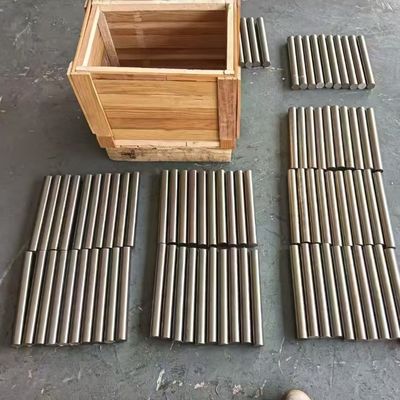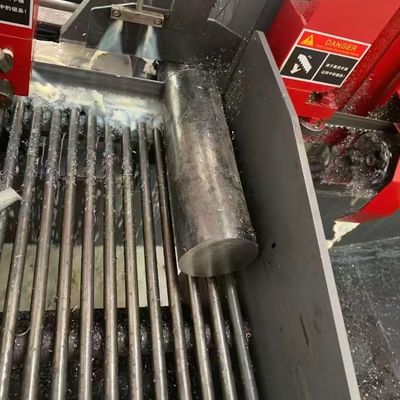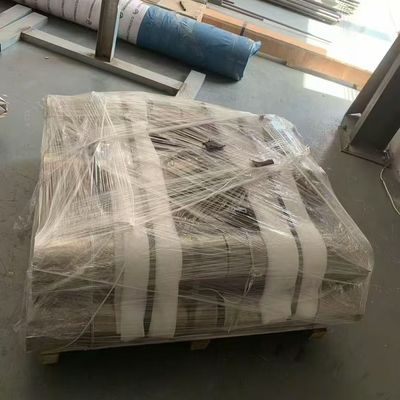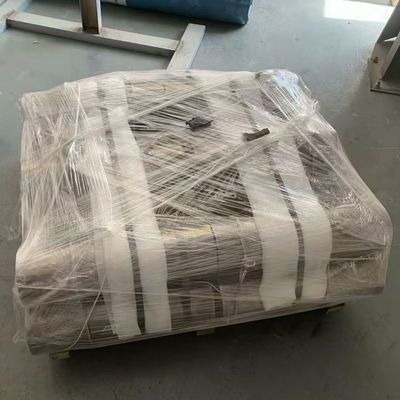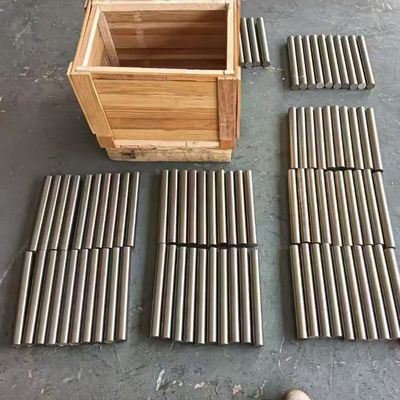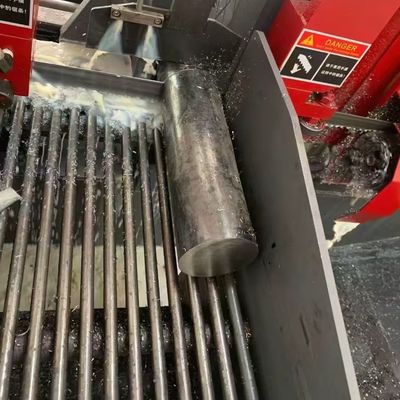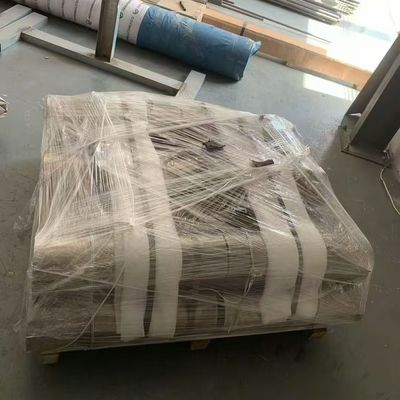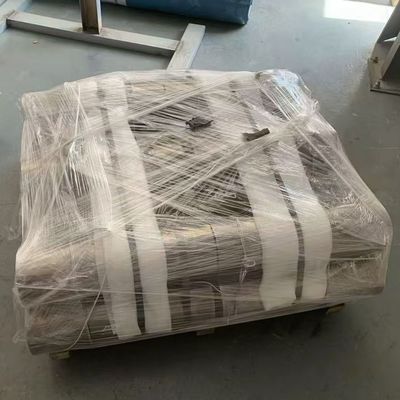All Products
-
 Raian IonescuMaterial quality very good. we have cooperate more than 10 Years. They trade lots kinds of steel material. All material quality good. They duty for all material quality. We are planing continue cooperate with them in the future
Raian IonescuMaterial quality very good. we have cooperate more than 10 Years. They trade lots kinds of steel material. All material quality good. They duty for all material quality. We are planing continue cooperate with them in the future
Hastelloy C276 Bright Solid Bar Oxidation Resistance Polished Surface for Aerospace and Petrochemical Uses

Contact me for free samples and coupons.
Whatsapp:0086 18588475571
Wechat: 0086 18588475571
Skype: sales10@aixton.com
If you have any concern, we provide 24-hour online help.
xProduct Details
| Products | Hastelloy C276 Bright Bar | Grade | Hastelloy C276 |
|---|---|---|---|
| Diameter | 5 - 350mm | Length | Custom Cutting Any Length As Request |
| Standard | ASTM EN | Service | Cutting |
| Loading Port | Shanghai Port | Surface | Bright |
| Highlight | Hastelloy C276 solid bar,polished nickel alloy bar,aerospace oxidation resistant bar |
||
Product Description
Hastelloy C276 Bright Solid Bar Oxidation Resistance Polished Surface for Aerospace and Petrochemical Uses
More Specification Informations
| Products Name | Hastelloy C276 Bright Bar |
| Diameter | 5 - 350mm |
| Length | custom cutting any length as request |
| Surface | bright, Black |
| Brand | DELTA |
| Service | cutting, Polishing |
| MOQ | 2 Kgs |
| Other Type | bar, strip,coil,pipe.sheet, plate,wire.etc |
| Packing | Wooden box |
| Loading Port | Shanghai Port |
| Price term | EXW,FOB,CIF,CFR |
| Deliver time | within 12 days |
1. Introduction
Hastelloy C276 bright solid bar is a high - performance nickel - based alloy product with outstanding properties. In the aerospace industry, components need to withstand extreme conditions such as high temperatures, high pressures, and strong corrosive media during flight. The excellent oxidation resistance of Hastelloy C276 bright solid bar ensures the stability and safety of aerospace parts, reducing the risk of component failure caused by oxidation and corrosion, thus contributing to the reliable operation of aircraft and spacecraft.
In the petrochemical industry, where equipment is often exposed to various corrosive chemicals during oil and gas exploration, refining, and chemical production processes. The polished surface of Hastelloy C276 not only provides better corrosion resistance but also reduces fluid resistance in pipelines, improving production efficiency. Its high - strength and corrosion - resistant characteristics enable petrochemical equipment to have a long - service life, reducing maintenance costs and production interruptions. Therefore, Hastelloy C276 bright solid bar plays a crucial role in both aerospace and petrochemical fields.
2. Chemical Composition
2.1 Main Elements
- Nickel (Ni): Nickel is the base element of Hastelloy C276, present in the largest proportion (the balance of the alloy composition). It provides the alloy with excellent basic corrosion resistance and mechanical properties. Nickel also contributes to the alloy's stability at high temperatures, ensuring that the alloy maintains its integrity and performance in high - temperature aerospace and petrochemical environments.
- Chromium (Cr): With a content ranging from 14.5% - 16.5%, chromium is a key element for enhancing corrosion resistance, especially in oxidizing environments. It forms a stable, adherent chromium - oxide film on the surface of the alloy, which acts as a protective barrier against further oxidation and corrosion. In the aerospace industry, this protection is crucial for components exposed to the oxidizing effects of high - altitude air during flight. In petrochemical applications, it helps the alloy resist the oxidation caused by various chemicals.
- Molybdenum (Mo): Molybdenum, with a content of 15.0% - 17.0%, significantly improves the alloy's corrosion resistance in reducing environments. It enhances the alloy's resistance to strong acids such as sulfuric acid and hydrochloric acid, which are commonly encountered in petrochemical processes. Molybdenum also contributes to the alloy's high - temperature strength and helps to prevent pitting and crevice corrosion, making it suitable for use in aggressive chemical environments in both industries.
2.2 Trace Elements
- Iron (Fe): Present in the range of 4.0% - 7.0%, iron is added to Hastelloy C276 mainly to reduce costs while still maintaining the alloy's excellent corrosion - resistant properties. Although it is a minor component compared to nickel, chromium, and molybdenum, it plays a role in the overall structure and properties of the alloy, ensuring that the alloy can meet the requirements of different applications in aerospace and petrochemical industries without sacrificing too much in terms of performance.
- Tungsten (W): Tungsten, with a content of 3.0% - 4.5%, further enhances the alloy's corrosion resistance, especially in environments containing chloride ions. It also contributes to increasing the alloy's strength and hardness, which is beneficial for components in aerospace that need to withstand high - stress conditions during flight, and in petrochemical plants where equipment may be subject to mechanical stress from flowing fluids and pressure differentials.
2.3 Chemical Composition Table
3. Mechanical Properties
3.1 Tensile Strength
The tensile strength of Hastelloy C276 bright solid bar is quite remarkable. In the annealed condition, it typically has a minimum tensile strength of around 690 MPa. This high - strength characteristic enables the alloy to withstand significant pulling forces without breaking. For example, in aerospace applications, components such as engine parts may experience extreme tensile stresses during flight, especially during take - off and high - speed maneuvers. The high tensile strength of Hastelloy C276 ensures that these parts can maintain their structural integrity under such demanding conditions. Even when exposed to high - temperature environments, which are common in both aerospace engines and petrochemical reactors, the tensile strength of Hastelloy C276 remains relatively stable up to a certain temperature range. This stability is crucial as it allows the alloy to be used in critical applications where strength retention is essential for the safe and efficient operation of equipment.
3.2 Yield Strength
The yield strength of Hastelloy C276 is usually at least 275 MPa in the annealed state. Yield strength represents the stress at which the material begins to deform plastically. A relatively high yield strength like that of Hastelloy C276 is beneficial in both processing and end - use applications. During the manufacturing process of forming the bright solid bar into various components, the high yield strength helps the alloy resist excessive deformation during cold - working operations such as forging or rolling. In petrochemical pipelines, the high yield strength ensures that the pipes can withstand the internal pressure exerted by the flowing fluids, preventing premature failure due to plastic deformation. This property also contributes to the overall durability of the alloy - made components, as it can better handle the mechanical stresses encountered in service.
3.3 Elongation
Hastelloy C276 has an elongation rate of at least 40% in the annealed condition. Elongation is a measure of the material's ability to stretch before breaking. A high elongation value, such as that of Hastelloy C276, indicates excellent plasticity and toughness. This is highly advantageous in applications where the material needs to be shaped into complex geometries. For instance, in the aerospace industry, when manufacturing intricate parts like turbine blades, the high elongation allows the alloy to be formed through processes like forging and machining without cracking. In petrochemical plants, the high - elongation property of Hastelloy C276 enables it to adapt to thermal expansion and contraction that occurs during temperature changes in equipment such as heat exchangers, reducing the risk of stress - induced failures.
3.4 Mechanical Properties Table
4. Standards
Hastelloy C276 bright solid bar adheres to several international and industry - recognized standards, which play a crucial role in ensuring its quality and performance consistency.
4.1 ASTM Standards
- ASTM B574: This standard is specifically for nickel - and cobalt - based alloy seamless pipe, fittings, and flanges. It sets strict requirements for the chemical composition limits of Hastelloy C276. For example, it precisely defines the allowable ranges of elements such as nickel, chromium, molybdenum, etc., as shown in the chemical composition table above. This ensures that the alloy's corrosion - resistant and mechanical properties are maintained. In terms of mechanical properties, it also specifies the minimum requirements for tensile strength, yield strength, and elongation, which are essential for ensuring the bar's performance in aerospace and petrochemical applications. For instance, in petrochemical pipelines, the pipe fittings made from Hastelloy C276 need to meet these mechanical property requirements to withstand the internal pressure and corrosive media.
- ASTM B564: This standard pertains to forged or rolled nickel - and cobalt - based alloy bars and shapes. It controls the quality of the forging and rolling processes, ensuring that the Hastelloy C276 bright solid bar has a proper microstructure. A uniform microstructure is vital for consistent mechanical properties throughout the bar. In aerospace component manufacturing, components forged from the bar need to have a reliable microstructure to endure the high - stress and high - temperature conditions during flight.
4.2 ASME Standards
ASME SA - 299 also has relevant provisions for Hastelloy C276 when it is used in pressure vessel applications. In the petrochemical industry, many vessels are designed to operate under high pressure and in contact with corrosive substances. The ASME standard ensures that the Hastelloy C276 used in these vessels can meet the safety and performance requirements under such harsh conditions. It not only covers the material's chemical and mechanical properties but also includes requirements for fabrication, inspection, and testing during the manufacturing of pressure vessels.
4.3 European Standards (DIN/EN)
In the European market, the material may also comply with DIN/EN 2.4819 standards. These European standards are similar to ASTM in many aspects but may have some differences in specific test methods and tolerances. They also focus on ensuring the quality and performance of Hastelloy C276, covering areas such as chemical composition control, mechanical property verification, and dimensional tolerances. This allows for the use of Hastelloy C276 bright solid bar in European aerospace and petrochemical projects with consistent quality and performance levels.
4.4 Standards Table
5. Equivalent Grades
Hastelloy C276 is known by different names in various countries and regions, and these equivalent grades represent the same high - performance nickel - based alloy with consistent chemical and mechanical properties.
- United States (UNS): In the United States, Hastelloy C276 is designated as UNS N10276. The Unified Numbering System (UNS) is widely used in the American materials industry to identify metals and alloys. UNS N10276 has the exact same chemical composition and meets the same strict standards as Hastelloy C276 in terms of mechanical properties and corrosion resistance. This ensures that American aerospace and petrochemical manufacturers can use the alloy with confidence, knowing that it will perform as expected in their applications. For example, in American aerospace engine manufacturing, components made from UNS N10276 are subject to the same rigorous quality control and performance requirements as those made from Hastelloy C276 in other parts of the world.
- Germany (W.Nr.): In Germany, the equivalent grade is W.Nr.2.4617 (also sometimes referred to as NiMo16Cr15W). The German W.Nr. (Werkstoffnummer) system is used to classify materials. W.Nr.2.4617 has the same high - nickel, chromium, and molybdenum content as Hastelloy C276, providing German companies in the aerospace and petrochemical sectors with a reliable material option. German petrochemical plants often use pipes and fittings made from W.Nr.2.4617 to handle corrosive chemicals, and the alloy's performance has been well - proven in these applications.
- France: In France, the alloy may be known as NC17D. This French designation is also equivalent to Hastelloy C276. French aerospace and petrochemical industries rely on the consistent properties of NC17D, which is interchangeable with Hastelloy C276 in terms of its ability to resist corrosion and maintain mechanical integrity in demanding environments. For instance, in French aerospace component manufacturing, NC17D can be used to produce parts that need to withstand high - temperature and high - stress conditions during flight.
5.1 Equivalent Grades Table
6. Oxidation Resistance
6.1 Oxidation Mechanism
When Hastelloy C276 is exposed to high - temperature environments, an oxidation reaction occurs on its surface. Oxygen in the air diffuses to the surface of the alloy and reacts with the elements in the alloy. The key elements in Hastelloy C276, such as chromium, play a crucial role in the oxidation - resistance mechanism. Chromium has a strong affinity for oxygen. When the alloy is heated, chromium atoms on the surface of the alloy react with oxygen to form a dense and adherent chromium - oxide (Cr₂O₃) film. This oxide film acts as a physical barrier, preventing further oxygen diffusion into the interior of the alloy, thus slowing down the oxidation rate.
Nickel also contributes to the overall oxidation - resistance of the alloy. It provides a stable matrix for the formation of the protective oxide film and helps to maintain the integrity of the alloy structure at high temperatures. Molybdenum, although mainly known for its role in enhancing corrosion resistance in reducing environments, also has a secondary effect on oxidation resistance. It can modify the structure of the oxide film, making it more stable and resistant to cracking or spalling, which could otherwise expose the underlying alloy to further oxidation.
6.2 Oxidation Resistance Performance
In laboratory - simulated high - temperature oxidation tests, Hastelloy C276 has demonstrated excellent oxidation - resistance performance. For example, at a temperature of 800°C in an air - rich environment, after 100 hours of continuous exposure, the weight gain due to oxidation is only about 0.01 g/cm². This low weight - gain indicates that the oxidation rate is extremely slow, and the protective oxide film formed on the surface effectively inhibits further oxidation.
In the aerospace industry, components made of Hastelloy C276, such as turbine engine parts, are often exposed to high - temperature combustion gases during flight. These components can operate for long periods without significant oxidation damage. For instance, in aero - engine afterburner components, which are subject to temperatures up to 900°C, Hastelloy C276 has shown reliable oxidation resistance over thousands of flight hours, ensuring the normal operation and safety of the engine.
In petrochemical plants, where equipment may be exposed to high - temperature process gases containing oxygen and other oxidizing substances, Hastelloy C276 also performs well. For example, in high - temperature reactors for chemical synthesis processes, the alloy's oxidation - resistance allows the equipment to maintain its structural integrity and corrosion - resistance properties over an extended service life, reducing the need for frequent maintenance and replacement due to oxidation - related failures.
However, it should be noted that when the temperature exceeds approximately 1100°C, the oxidation resistance of Hastelloy C276 begins to decline. At such high temperatures, the stress within the oxide film may cause cracking, and the diffusion rate of oxygen through the film may increase, leading to more rapid oxidation of the underlying alloy. Therefore, in applications, it is necessary to ensure that the operating temperature of Hastelloy C276 components is within a reasonable range to fully utilize its excellent oxidation - resistance properties.
7. Polished Surface
7.1 Surface Treatment Process
To achieve a polished surface on Hastelloy C276 bright solid bar, several surface treatment processes are commonly employed.
Mechanical Polishing: This is a widely used method. It involves using abrasive materials such as sandpapers with different grit sizes, polishing wheels, and polishing compounds. First, coarser - grit sandpapers are used to remove any surface imperfections, scratches, or rough areas on the bar. As the process progresses, finer - grit sandpapers are employed to gradually achieve a smoother and shinier surface. For example, starting with 80 - grit sandpaper to remove major surface irregularities, and then moving on to 240 - grit, 400 - grit, and finally up to 1000 - grit or even higher for a mirror - like finish. Polishing wheels, often made of materials like cotton or wool, are used in combination with polishing compounds. These compounds contain fine abrasive particles that help in further smoothing and brightening the surface during the polishing process. Mechanical polishing is suitable for achieving a high - quality surface finish on a wide range of Hastelloy C276 bar sizes and shapes, and it is commonly used when a general improvement in surface smoothness and appearance is required.
Electrolytic Polishing: In this process, the Hastelloy C276 bar is immersed in an electrolyte solution and acts as the anode in an electrolytic cell. When an electric current is passed through the cell, metal ions from the surface of the bar dissolve preferentially at the microscopic high points. This results in a leveling of the surface, removing any surface roughness and creating a highly polished finish. The advantage of electrolytic polishing is that it can produce a very uniform and mirror - like surface finish, even on complex - shaped bars. It also does not introduce mechanical stresses into the material like mechanical polishing might. However, it requires specialized equipment and careful control of the electrolyte composition, temperature, and current density. This method is often chosen when a high - end, consistent surface finish is crucial, such as in aerospace applications where the surface quality can affect the aerodynamic performance of components.
Chemical Polishing: Chemical polishing involves immersing the Hastelloy C276 bar in a chemical solution that reacts with the surface of the metal. The chemical reaction selectively dissolves the high points on the surface, gradually smoothing it out and creating a polished appearance. Chemical polishing is relatively simple and can be used for bars with complex geometries. However, it may not produce as high - a quality finish as electrolytic polishing, and the disposal of the chemical waste needs to be carefully managed due to environmental concerns. It is sometimes used in petrochemical applications where a moderately polished surface that helps with corrosion resistance and fluid flow is sufficient.
7.2 Benefits of Polished Surface
- Enhanced Corrosion Resistance: A polished surface significantly contributes to the already excellent corrosion - resistance properties of Hastelloy C276. The smooth surface reduces the sites where corrosive substances can accumulate and initiate corrosion. For example, in petrochemical plants where the bar may be exposed to corrosive chemicals, a polished surface minimizes the chances of pitting corrosion. Pitting occurs when small pits or holes form on the surface of the metal due to localized corrosion. With a polished surface, there are fewer irregularities for corrosive ions, such as chloride ions in seawater or acidic solutions, to get trapped and start the corrosion process. In aerospace, components made of polished Hastelloy C276 are better protected against the corrosive effects of high - altitude air and any contaminants in the flight environment.
- Improved Aesthetic Appeal: In some applications, especially where the Hastelloy C276 components are visible, the polished surface provides an attractive and professional appearance. For example, in certain high - end petrochemical equipment that may be on display in plant visitor areas or in some aerospace interior components, the shiny, polished surface gives a sense of quality and precision. It also helps in easy identification and inspection of the components, as any surface defects are more easily visible on a polished surface.
- Reduced Impurity Adhesion: A polished surface has less tendency to attract and hold impurities. In both aerospace and petrochemical applications, this is important. In petrochemical pipelines, a polished inner surface of the Hastelloy C276 pipe reduces the adhesion of solid particles or residues from the flowing chemicals. This helps to maintain the flow rate and prevents clogging of the pipelines. In aerospace, on components such as engine parts, a polished surface reduces the accumulation of dust, dirt, or other airborne particles during flight, which could potentially affect the performance or cause premature wear of the components.
8. Applications in Aerospace and Petrochemical Industries
8.1 Aerospace Applications
- Turbine Engine Components: In aerospace, turbine engines operate under extremely harsh conditions. Hastelloy C276 bright solid bar is often used to manufacture components such as turbine blades and discs. The high - temperature strength of the alloy ensures that these components can withstand the high - rotational speeds and high - temperature gas flows within the engine. For example, during flight, the turbine blades are exposed to combustion gases with temperatures reaching up to 1000°C or more. The oxidation - resistance property of Hastelloy C276 protects the blades from being rapidly oxidized in this high - temperature and oxygen - rich environment, maintaining their structural integrity and aerodynamic performance. The high tensile and yield strengths allow the blades to endure the centrifugal forces generated by high - speed rotation without deformation or failure.
- Combustion Chamber Liners: Combustion chambers in aircraft engines are subject to intense heat and corrosive combustion products. Hastelloy C276's polished surface not only reduces the adhesion of combustion residues but also provides enhanced corrosion resistance. The alloy's ability to resist oxidation and corrosion in the presence of hot gases containing oxygen, sulfur, and other elements ensures the long - term reliability of the combustion chamber liners. This is crucial for maintaining the efficient combustion process within the engine, as any degradation of the liner could lead to uneven combustion, reduced engine performance, and potentially safety issues.
- Exhaust Systems: The exhaust systems of aerospace vehicles experience high - temperature exhaust gases and thermal cycling during take - off, flight, and landing. Hastelloy C276 is used in the construction of exhaust ducts and nozzles. Its high - temperature strength allows it to maintain its shape and structural integrity during thermal expansion and contraction. The oxidation - resistance property protects the exhaust system components from the oxidizing effects of the hot exhaust gases, which often contain oxygen and other reactive substances. This helps to extend the service life of the exhaust system and reduces the need for frequent maintenance and replacement, contributing to the overall cost - effectiveness and reliability of the aircraft.
8.2 Petrochemical Applications
- Pipelines: In petrochemical plants, pipelines are used to transport various corrosive fluids, including crude oil, refined products, and chemical reagents. Hastelloy C276 bright solid bar is used to manufacture pipelines due to its excellent corrosion - resistance properties. For instance, when transporting sulfur - containing crude oil, the high molybdenum content in Hastelloy C276 provides resistance to the corrosive effects of sulfuric acid, which can be formed during the refining process. The polished inner surface of the pipeline reduces the friction coefficient, allowing for smooth fluid flow and minimizing pressure drops. This improves the efficiency of the transportation process and reduces energy consumption.
- Valves: Valves in petrochemical plants control the flow of fluids and are often exposed to highly corrosive media. Hastelloy C276 is used to make valve bodies, stems, and seats. The high - strength and corrosion - resistant properties of the alloy ensure that the valves can operate smoothly and accurately in aggressive chemical environments. For example, in a plant that produces hydrochloric acid, the valves made of Hastelloy C276 can withstand the strong corrosive action of hydrochloric acid without significant wear or corrosion, ensuring the normal operation of the production process and preventing leakage of hazardous chemicals.
- Reactors: Chemical reactors in the petrochemical industry are where various chemical reactions take place under high - temperature and high - pressure conditions. Hastelloy C276 is used to construct reactor vessels and internal components. The alloy's oxidation - resistance and high - temperature strength enable the reactor to maintain its structural integrity during chemical reactions that may involve the presence of oxidizing agents and high temperatures. For example, in a polymerization reactor where monomers are converted into polymers under high - temperature and high - pressure conditions, Hastelloy C276 can resist the corrosive effects of the reaction medium and the high - temperature environment, ensuring the safe and efficient operation of the reactor and the quality of the polymer products.
9. Conclusion
In conclusion, Hastelloy C276 bright solid bar is a remarkable nickel - based alloy product with a unique combination of properties. Its carefully balanced chemical composition, featuring high nickel, chromium, and molybdenum contents, endows it with outstanding corrosion resistance in both oxidizing and reducing environments, as well as high - temperature strength.
The mechanical properties, such as high tensile strength, yield strength, and good elongation, ensure its reliability and durability in various applications. Adherence to international standards like ASTM, ASME, and DIN/EN guarantees its quality and performance consistency, making it a trusted choice for manufacturers worldwide.
The equivalent grades in different countries and regions provide flexibility in material sourcing while maintaining the same high - quality performance. The excellent oxidation - resistance property, attributed to the formation of a stable chromium - oxide film, allows components made of Hastelloy C276 to operate safely and efficiently in high - temperature environments, which is crucial for aerospace engine components and petrochemical high - temperature equipment.
The polished surface, achieved through mechanical, electrolytic, or chemical polishing processes, not only enhances its corrosion resistance by reducing the sites for corrosion initiation but also improves its aesthetic appeal and reduces impurity adhesion, bringing multiple benefits to both aerospace and petrochemical applications.
In the aerospace industry, it is widely used in turbine engine components, combustion chamber liners, and exhaust systems, contributing to the high - performance and safety of aircraft. In the petrochemical industry, it plays a vital role in pipelines, valves, and reactors, ensuring the smooth operation of petrochemical production processes and reducing maintenance and replacement costs due to its corrosion - resistance and high - strength properties.
![]()
![]()
![]()
![]()
Recommended Products



